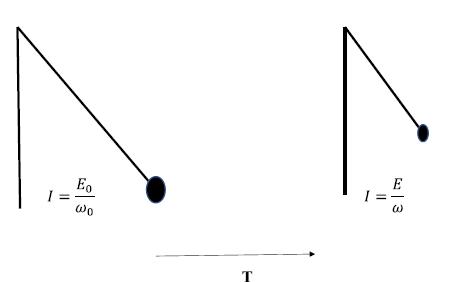
تاريخ الفيزياء

علماء الفيزياء


الفيزياء الكلاسيكية

الميكانيك

الديناميكا الحرارية


الكهربائية والمغناطيسية

الكهربائية

المغناطيسية

الكهرومغناطيسية


علم البصريات

تاريخ علم البصريات

الضوء

مواضيع عامة في علم البصريات

الصوت


الفيزياء الحديثة


النظرية النسبية

النظرية النسبية الخاصة

النظرية النسبية العامة

مواضيع عامة في النظرية النسبية

ميكانيكا الكم

الفيزياء الذرية

الفيزياء الجزيئية


الفيزياء النووية

مواضيع عامة في الفيزياء النووية

النشاط الاشعاعي


فيزياء الحالة الصلبة

الموصلات

أشباه الموصلات

العوازل

مواضيع عامة في الفيزياء الصلبة

فيزياء الجوامد


الليزر

أنواع الليزر

بعض تطبيقات الليزر

مواضيع عامة في الليزر


علم الفلك

تاريخ وعلماء علم الفلك

الثقوب السوداء


المجموعة الشمسية

الشمس

كوكب عطارد

كوكب الزهرة

كوكب الأرض

كوكب المريخ

كوكب المشتري

كوكب زحل

كوكب أورانوس

كوكب نبتون

كوكب بلوتو

القمر

كواكب ومواضيع اخرى

مواضيع عامة في علم الفلك

النجوم

البلازما

الألكترونيات

خواص المادة


الطاقة البديلة

الطاقة الشمسية

مواضيع عامة في الطاقة البديلة

المد والجزر

فيزياء الجسيمات


الفيزياء والعلوم الأخرى

الفيزياء الكيميائية

الفيزياء الرياضية

الفيزياء الحيوية

الفيزياء العامة


مواضيع عامة في الفيزياء

تجارب فيزيائية

مصطلحات وتعاريف فيزيائية

وحدات القياس الفيزيائية

طرائف الفيزياء

مواضيع اخرى
ADIABATIC PROCESS
المؤلف:
Shabnam Siddiqui
المصدر:
Quantum Mechanics
الجزء والصفحة:
196
25-3-2021
2724
ADIABATIC PROCESS
In classical physics, adiabatic processes are mainly associated with thermodynamics and mechanics. In thermodynamics, when changes occur to a system such that it remains in a state of equilibrium with its environment at all the times, such that its entropy remain constant, the process by which such changes occur to a system is called an adiabatic process. For example, consider a gas inside a container that is a thermal insulator. If now the gas expands or contracts without gaining or losing heat energy, then such a process of expansion or contraction of gas is called an adiabatic process. Heat energy and entropy remain constant all the time; thus, heat energy and entropy are called adiabatic invariants.
In mechanical systems, if one of the parameters defining the motion of a system is varied very slowly over a long period of time, the energy is no longer constant in time. However, the action variable for such a system remains constant in time and, thus, is an adiabatic invariant. For example, consider a pendulum whose length “l0” is reduced to some length “l” very slowly over a long period of time (T ). The action variable of the pendulum which is I = E/ω, (where E is the energy and ω is the angular frequency of the pendulum) remains constant in time. After a very long time, “T,” the energy and angular frequency of oscillations of the pendulum changes, but action variable which is adiabatic invariant remains constant, as shown in Figure 1. The shortening of the string increases the energy and angular frequency of the pendulum.

FIGURE 1: An illustration of the adiabatic invariant in a pendulum.
In quantum mechanics, consider a Hamiltonian of a system “H(0)” at time t = 0 which changes very slowly over a very long period of time “T” to H(T ). If initially the system starts out in a stationary state |n(0)〉, what would be the final state of the system after time “T”?
To find an answer to such a question, we need to resort to adiabatic theorem.
 الاكثر قراءة في ميكانيكا الكم
الاكثر قراءة في ميكانيكا الكم
 اخر الاخبار
اخر الاخبار
اخبار العتبة العباسية المقدسة

الآخبار الصحية















 قسم الشؤون الفكرية يصدر كتاباً يوثق تاريخ السدانة في العتبة العباسية المقدسة
قسم الشؤون الفكرية يصدر كتاباً يوثق تاريخ السدانة في العتبة العباسية المقدسة "المهمة".. إصدار قصصي يوثّق القصص الفائزة في مسابقة فتوى الدفاع المقدسة للقصة القصيرة
"المهمة".. إصدار قصصي يوثّق القصص الفائزة في مسابقة فتوى الدفاع المقدسة للقصة القصيرة (نوافذ).. إصدار أدبي يوثق القصص الفائزة في مسابقة الإمام العسكري (عليه السلام)
(نوافذ).. إصدار أدبي يوثق القصص الفائزة في مسابقة الإمام العسكري (عليه السلام)


















